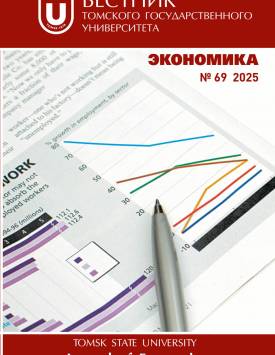A critical analysis of the procedure for the allocation of income taxes. Part I
The aim of this article is to critically analyse the procedure of income tax allocation since its inception in the USA in the 1930s-1940s. The relevance of the study is determined by the fact that the procedure of inter-period allocation continues to be theoretically unsound for more than 60 years. When the Committee on Accounting Procedures (CAP) defined income taxes as expenses in 1944, the corresponding position has been used in all subsequent standards, including modern ones. However, there are no solid arguments regarding the qualification of income taxes as expenses. The first part of this article characterises the approaches to income tax allocation in the 1930s-1960s. Five allocation concepts (no allocation, liability concept, net-of-tax concept, deferred concept, capital contribution concept) are highlighted. It is shown that at the time of G. Black's research for the AICPA none of them had a solid theoretical foundation. Since the expense/revenue approach was prevalent in the US prior to the creation of the FASB, the only concept that was conveniently matching revenue and expense was the deferred concept. It is concluded that these five concepts have not been rigorously reviewed by anyone subsequently, and that the contradictions underlying them have been carried over from standard to standard. In 1992, the FASB adopted SFAS No. 109, Accounting for Income Taxes, which changed the "allocation basis" of income taxes and began to regulate the liability concept. But it also proved to be a convenient "tweak" to the asset/liability approach, which will be characterised in more detail in the second part of the study. The author declares no conflicts of interests.
Keywords
deferred taxes,
inter-period allocation,
income taxes,
tax effectsAuthors
| Aksent'ev Andrei A. | Kuban State University | anacondaz7@rambler.ru |
Всего: 1
References
Rayburn, F.R. (1986) Chronological review of the authoritative literature on interperiod tax allocation: 1940-1985. Accounting Historians Journal. 13 (2). pp. 89-108.
Black, H. (1966) Interperiod allocation of corporate income taxes. Accounting research study № 09. New York, AICPA.
Schultz, S.M. & Johnson, R.T. (1998) Income tax allocation: The continuing controversy in historical perspective. Accounting Historians Journal. 25 (2). pp. 81-111.
Nurnberg, H. (2009) Conceptual nature of the corporate income tax. The Accounting Historians Journal. 36 (2). pp. 31-74.
Moonitz, M. (1957) Income Taxes in Financial Statements. The Accounting Review. 32 (2). pp. 175-183.
Moonitz, M. (1966) Some Reflections on the Investment Credit Experience. Journal of Accounting Research. 4 (1). pp. 47-61.
Hylton, D.P. (1965) On Matching Revenue with Expense. The Accounting Review. 40 (4). pp. 824-828.
Chambers, R.J. (1968) Tax Allocation and Financial Reporting. ABACUS. 4 (2). pp. 99-123. 10.1111/j. 1467-6281.1968.tb00412.x.
Barton, A.D. (1970) Company Income Tax and Interperiod Allocation. ABACUS. 6 (1). pp. 3-24.
Sands, J.E. (1959) Deferred Tax Credits are Liabilities. The Accounting Review. 34 (4). pp. 584-590.
Graham, W.J. (1959) Income Tax Allocation. The Accounting Review. 34 (1). pp. 14-27.
Hill, T.M. (1957) Some Arguments against the Inter-Period Allocation of Income Taxes. The Accounting Review. 32 (3). pp. 357-361.
Davidson, S. (1958) Accelerated depreciation and the allocation of income taxes. The Accounting Review. 33 (2). pp. 173-180.
Jaedicke, R.K. & Nelson, C.L. (1960) The Allocation of Income Taxes - A Defense. The Accounting Review. 35 (2). pp. 278-281.
Graul, P.R. & Lemke, K.W. (1976) On the Economic Substance of Deferred Taxes. ABACUS. 12 (1). pp. 14-31.
Colley, R., Rue, J. & Volkan, A. (2004) Deferred taxes revisited. Journal of Business and Economics Research. 2 (8). pp. 13-24.
Powell, W. (1959) Accounting Principles and Income-Tax Allocation. New York Certified Public Accountant. 29 (1). pp. 21-31.
Baylis, A.W. (1971) Income Tax Allocation - A Defence. ABACUS. 7 (2). pp. 161-172.
Bierman, H. Jr. (1963) A Problem in Expense Recognition. The Accounting Review. 38 (1). pp. 61-63.
Drake, D.F. (1962) The Service Potential Concept and Inter-Period Tax Allocation. The Accounting Review. 37 (4). pp. 677-684.
Dotan, A. (2003) On the Value of Deferred Taxes. Asia-Pacific Journal of Accounting & Economics. 10 (2). pp. 173-186.
Raby, W.L. (1969) Tax Allocation and Non-Historical Financial Statements. The Accounting Review. 44 (1). pp. 1-11.

